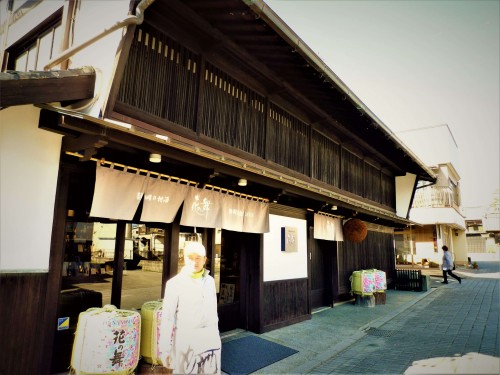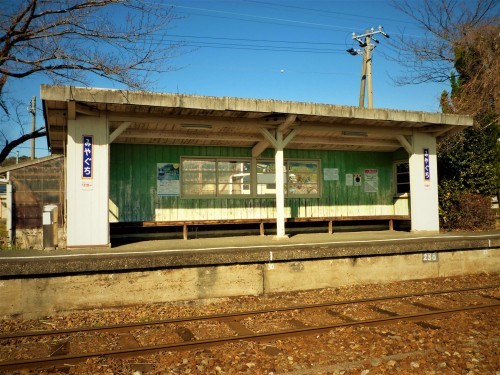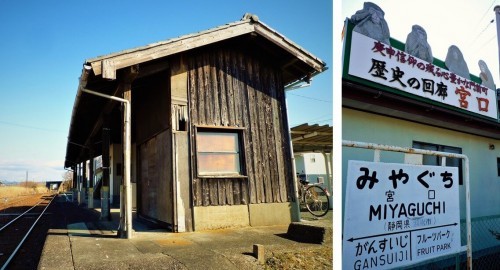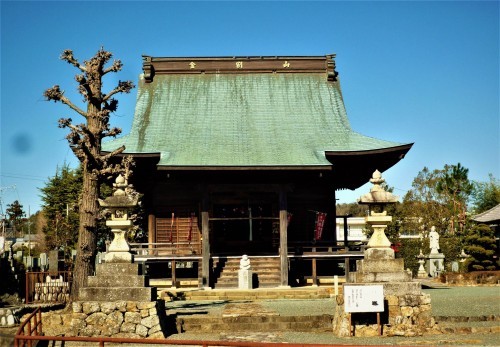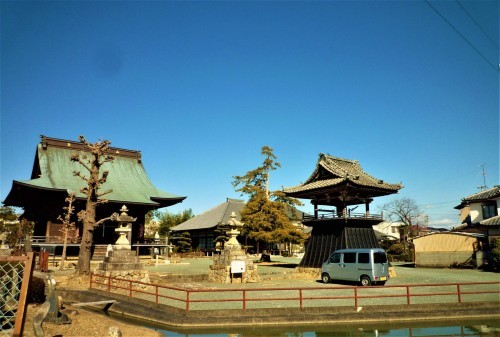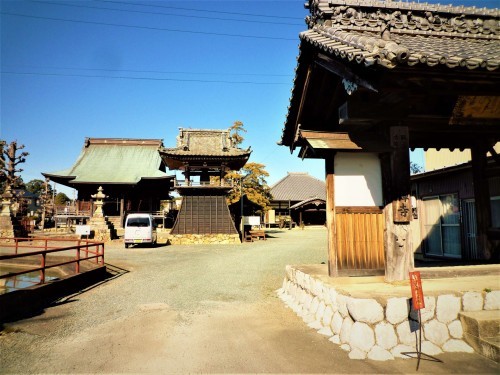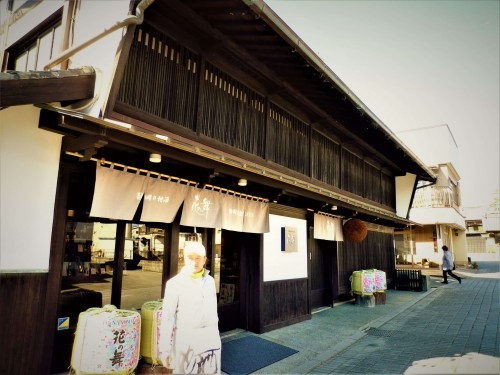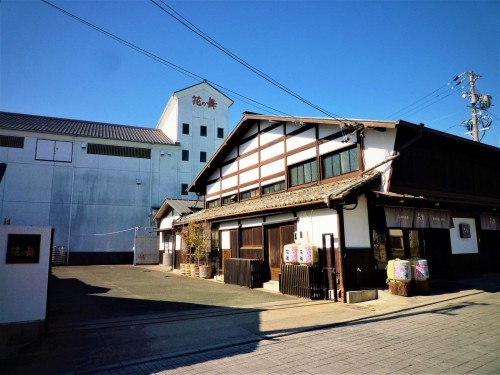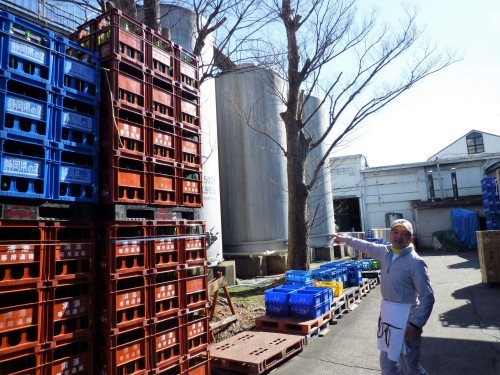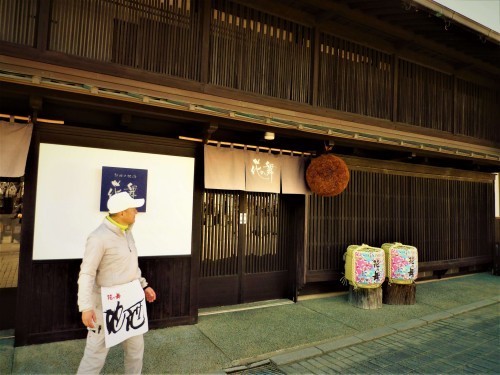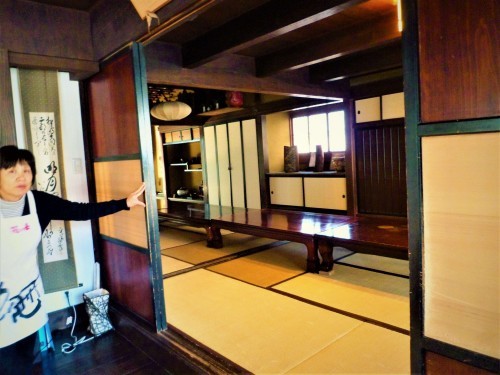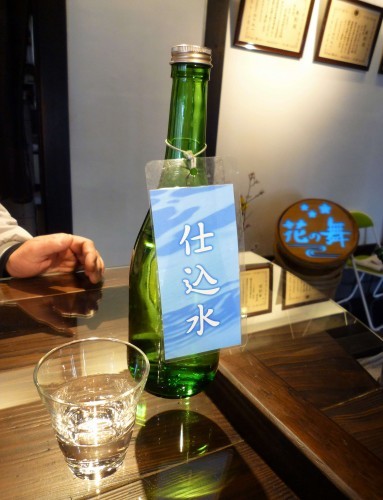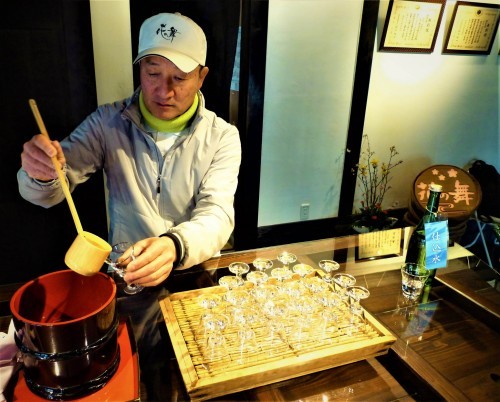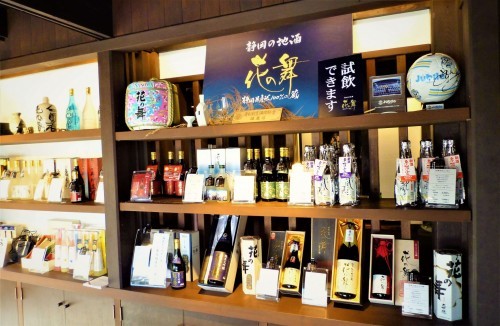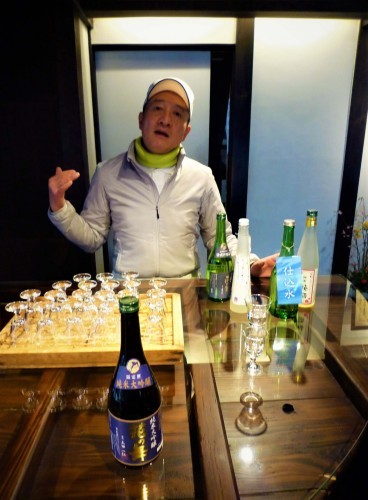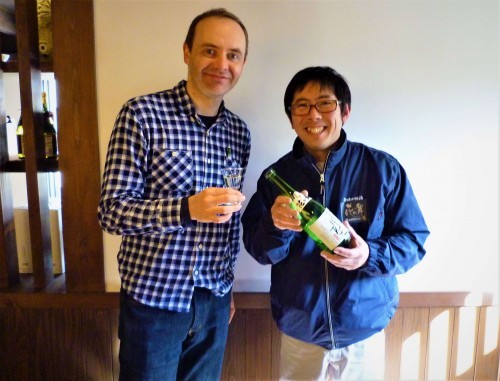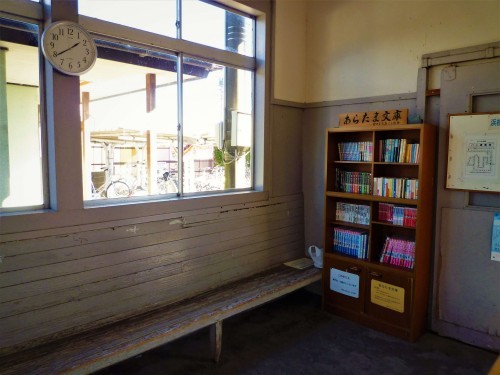Enotourism—tourism with the main purpose of visiting wineries—has become an emerging trend for the past few years. I am not exactly sure of all that enotourism includes. Is it exclusive to grape juice? Can other types of alcohol be incorporated into this definition? I must confess I had never tried this practice before my trip to Shizuoka, which allowed me to visit a local shuzo—sake distillery. It was my very first time ever experiencing, saketourism, for lack of a better word, but I definitely enjoyed it. Follow me all the way to Miyaguchi to get the details of my wonderful time at Hananomai!
Arriving in Miyaguchi
This is the cute little station I arrived at:
As you can see, this is no Shibuya, and certainly no Shinjuku either, but it serves a very special line…
We crossed the tracks and headed towards Miyaguchi. A small, quiet, rural town, it did not take long for us to find what we were looking for.
Miyaguchi’s temple
Miyaguchi’s history has a lot—actually, everything—to do with the local temple. Miyaguchi is a mozembachi: a ‘town in front of the gate.’ The ‘gate,’ in this case, is that of Koshin-ji Temple.
Buddhist temples have always been deeply respected in the country, even during Japan’s darkest times. Sacred in nature, these buildings have always made people feel safe.
Quickly enough, monzenmachi—small villages built next to temples—prospered all over the nation.
Both monumental and modest, this gate marks the starting point to a long path that crosses the town. Houses and shops were built along the street until, eventually, an entire city was established. The building we were looking for is located right next to the gate.
A seasoned distillery
At the start of the Meiji era, a small, local business opened its doors to the public: Hananomai Shuzo. Almost 150 years later, it is still up and running in the same location where it was originally established.
Needless to say, many things have changed over the years. The factory now comprises several buildings, all purchased overtime in order for it to meet the needs of the current trade business. Behind the main building sits a manufacturing plant where product development takes place.
Our visit started at the third and most recent building, which holds the company’s headquarters, as well as the bottling plant. Our host, Mr. Ono Masahoshi, greeted us there.
What is it like working at a shuzo?
Mr. Ono is in charge of the sales department. However, his job entails a lot more than just selling things. A vast list of skills and services make him the perfect connoisseur of the sake industry. Moreover, his near-perfect English allows him to act as an ambassador to the firm by welcoming international visitors.
Our tour began in a conference room, where we were shown a short film about the history of Hananomai, as well as given a glimpse into the production process. But, for safety reasons, work areas can only be accessed by employees. The documentary was the only way for us to see all the different stages of rice fermentation. Yamada Nishiki, the variety used for this elaboration, is exclusively grown in nearby fields. It is the quality of this particular rice, along with the purity of the water used and the utmost control of temperatures in every stage of the production, that makes this product a high-quality sake like no other.
The storage tanks shown in the above picture are used for collecting the product in process. With a capacity of over 50,000 liters, we can only imagine what Hananomai’s toji‘s workload looks like. Toji is the word used for a sake company’s CEO. Rather than mere management, a toji acts something like an art director. They get to decide the ingredients and resulting taste of the final product.
A historic pavilion
The building where it all started for Hananomai was the next stop in our tour.
Once upon a time, this old, wooden building was everything Hananomai possessed. Nowadays, it is used as the company’s principal product showcase. Conveniently located in the city’s main street, right across from Koshin-ji, this edifice houses a shop where visitors can taste and purchase the product.
Before the tasting began, the store staff showed us around the shop, which used to be the company’s headquarters back in the day.
Room dividers and sliding doors (as portrayed in the picture) allowed workers to run the business while also providing a private space for customer use. Here, visitors would be charmed into closing business deals with the company.
A gift for your palate
As we mentioned before, the rice used for this sake is carefully handpicked among the local rice production. Same thing happens with the water. In a way, Hananomai’s success comes from the ground where it stands. The water used for their sake comes from an aquifer located 150 meters under the surface. The tasting began with a sip of this peculiar water.
You might wonder what is so interesting about tasting water—some flavorless liquid you can find anywhere. I felt the same way at first! But you should really pay a visit to Hananomai and taste it for yourself. The effect of this water against your palate is truly indescribable. All I can do is encourage you to come try it.
Apparently, the underground river flowing in this area traces back to Akaishi’s—Nagano’s Japanese Alps—melting ice. This water purifies itself on its long way to Shizuoka, which is precisely what makes it so peculiar. But we did not come here looking for water, so let us get back to business.
The first glass we were served did not come from a bottle—it came directly from an exclusive barrel. We were given a refined, special sake only offered to visitors. Once again, I have a hard time finding the words to describe the taste of this sake. Considering this liquor cannot be found anywhere else in the world, you absolutely must come here and taste it for yourself!
Taste the variety
I could not fit every product on display into one picture, but I made an attempt. The full catalogue takes up another shelf like the one below:
Keep in mind that sake is supposed to be served with a meal. Therefore, it is important for you to pick a variety that fits your menu. I am no sake connoisseur, but I still enjoyed each and every one of the varieties I was offered, which was quite a few.
I also had a very special privilege which came from a mere coincidence. Hananomai’s toji showed up unexpectedly during the tasting. He served me some junmai daiginjo—Hananomai’s limited edition, specialty sake, which can only be found at Hananomai’s Miyaguchi store.
Happy, thankful and—let me be honest here—a little tipsy, I said my goodbyes and headed back to the train station.
The way back
Back at Miyaguchi’s train station, I could not help but lament not having enough time to explore the area a little further. I wish I could have visited some interesting caves located not too far from the station, but, alas, I had no time. All I could do was sit back and relax. Or maybe pick up a book from the shelf placed inside the station’s waiting area.
A remote little village, a rural landscape, history, some top-quality sake and a fantastic, exclusive experience unique to this place… Are you sure you do not want to come over? If you do, remember that Hananomai’s tastings are free with a prior online reservation. We hope you enjoy your experience!
See you on our next adventure!
Original article by José Montaño
Translated by Virginia González
SHIZUOKA GUIDE
Need more information? You can find up to date information about Shizuoka’s history, sightseeing locations, accommodation, food, and transportation below:
https://shizuoka-guide.com/english/
[cft format=0]


